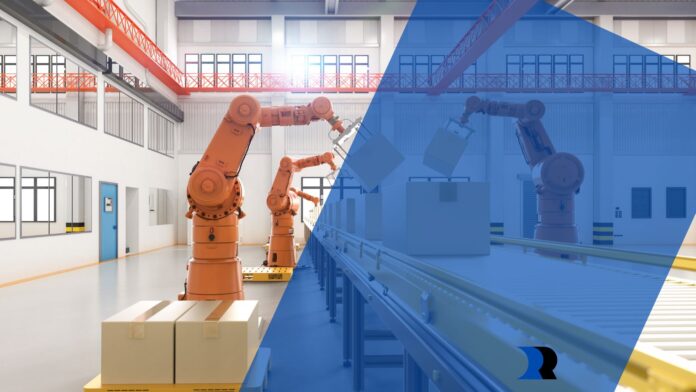Collaborative robots, commonly known as cobots, represent a significant leap forward in manufacturing technology. Unlike traditional industrial robots, which often require extensive safety measures and dedicated spaces, cobots are designed to work alongside human operators in a shared workspace. This collaboration allows for greater flexibility and scalability in manufacturing processes. In this article, we will explore how cobot arms are transforming the manufacturing landscape by making them more adaptable, efficient, and cost-effective.
Evolution of Manufacturing Technologies
To appreciate the role of cobot arms in modern manufacturing, it is essential to understand their evolution. Historically, manufacturing relied heavily on manual labor and basic machinery. As production demands grew, so did the complexity of manufacturing processes. This led to the introduction of industrial robots in the latter half of the 20th century. These robots revolutionized production lines by automating repetitive and hazardous tasks, significantly increasing output and safety.
However, traditional industrial robots came with their own set of challenges. They were typically large, expensive, and required dedicated safety enclosures due to their high-speed and powerful operations. This limited their flexibility and accessibility, especially for smaller manufacturing operations.
The emergence of collaborative robots in manufacturing addressed these limitations. Developed with advanced sensors and safety systems, cobots can operate safely alongside human workers. Their design allows for easy integration into existing production environments, making them accessible to a broader range of manufacturers.
Key Features of Cobot Arms
Cobot arms are distinguished by several key features that enhance their utility in manufacturing settings. One of the primary advantages is their collaborative capability. Unlike traditional robots that operate in isolation, cobots are designed to work safely alongside humans. They are equipped with advanced sensors and algorithms that enable them to detect and respond to the presence of human operators, ensuring a safe and efficient work environment.
Another notable feature of cobots is their ease of integration. Unlike their industrial counterparts, cobots can be quickly incorporated into existing manufacturing systems with minimal disruption. Their user-friendly programming interfaces allow for straightforward setup and reconfiguration, enabling manufacturers to adapt them to various tasks without requiring extensive technical expertise.

Cost efficiency is another significant advantage of cobot arms. The initial investment required for cobots is generally lower than that for traditional industrial robots. Additionally, their versatility reduces the need for costly infrastructure changes. This makes cobots an attractive option for companies looking to enhance their manufacturing capabilities without substantial capital expenditure.
Benefits of Cobot Arms in Manufacturing
The benefits of cobot arms in manufacturing are substantial and multifaceted. One of the most significant advantages is their scalability. Cobot arms can easily be scaled up or down to meet changing production demands. This flexibility allows manufacturers to adjust their operations in response to market fluctuations or varying production volumes. The ability to rapidly reconfigure production lines makes cobots particularly valuable in industries where product designs and requirements frequently change.
Flexibility is another key benefit of cobot arms. Their ability to perform a wide range of tasks—from assembly and quality inspection to packaging and palletizing—makes them suitable for diverse manufacturing applications. This versatility enables manufacturers to streamline their operations by using a single type of robot for multiple tasks rather than relying on specialized machines for each function.
Enhanced productivity is also a notable advantage of cobots. By automating repetitive and time-consuming tasks, cobots increase throughput and reduce downtime. Their precision and consistency improve product quality and reduce the likelihood of errors, further boosting overall efficiency. This leads to faster production cycles and a more responsive manufacturing process.
Applications of Cobot Arms
Cobot arms find application across various facets of manufacturing, each showcasing their versatility and adaptability. In assembly lines, cobots can take on tasks such as component assembly and quality inspection. Their ability to work collaboratively with human operators enhances production efficiency and allows for more complex assembly processes.
In packaging and palletizing, cobots streamline the handling and organization of products. They can automate the packing of goods into boxes and the arrangement of these boxes onto pallets, significantly improving the speed and accuracy of these tasks. This automation reduces labor costs and minimizes the risk of packaging errors.
Challenges and Considerations
Despite their advantages, the implementation of cobot arms in manufacturing comes with certain challenges. Safety and compliance are primary concerns.

While cobots are designed to operate safely alongside humans, manufacturers must ensure that their use complies with industry safety standards and regulations. Proper risk assessments and safety protocols are essential to mitigate potential hazards.
Integration with existing systems can also pose challenges. Although cobots are designed for easy incorporation, adapting them to fit seamlessly into established workflows may require careful planning and adjustments. Manufacturers must consider how cobots will interact with existing machinery and processes to optimize their performance.
Conclusion
Cobot arms are revolutionizing manufacturing by providing a scalable, flexible, and cost-effective solution for modern production challenges. Their collaborative capabilities, ease of integration, and cost efficiency make them a valuable asset in diverse manufacturing environments. As technology continues to advance, cobots will play an increasingly important role in shaping the future of manufacturing, driving innovation, and improving productivity. The continued evolution of cobot technology promises to unlock new possibilities and further enhance the capabilities of manufacturing operations.


